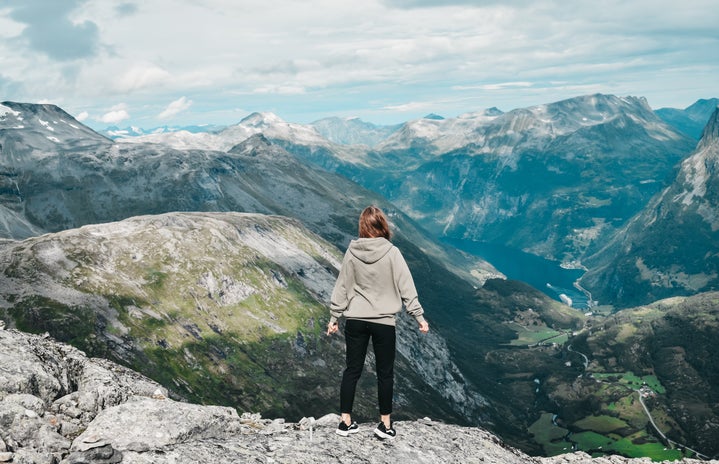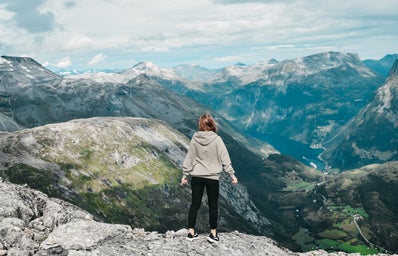Ah, New York City. Chicago. Los Angeles. Paris. London. Places of culture, good food, bustling energy, and diversity. Well, diversity now, anyways.
The “city”, or urban space, is revered and romanticized by many. Beautiful skylines, a busy ambiance, the feeling of opportunity–what’s not to love?
Perhaps an answer to that question is the catcalling. The smell of trash, filling up the waste receptacles. The long search and lines for a public bathroom that inevitably smells horrible as well. The horrible inevitability of the homeless population. But above all, the real, big, centuries-long problem with cities is this: they weren’t made with women in mind.
The intentions and goals of city planning have never been to accommodate women, or anyone besides healthy white cis-gendered men.
Jane Darke, author of “Changing Places: Women’s Lives in The City” makes the sad, but accurate remark in her book*:
“Women know that the city space doesn’t really belong to them…when using the city, women must be constantly on their guard against male appropriation, from the shout of ‘cheer up love’, the wolf-whistler, the admiring gaze…to the offensive drunk, the flasher, the rapist.”
And it’s true, the city is dangerous for women, women of color especially. We’re more likely to pack our pepper spray and form a group for safety when planning a city trip, or simply avoid the urban setting. For men of color and gay men, the experience is similar. **
While these precautions we must take are ingrained into our psyche, they’re also ingrained into the very sidewalks, skyscrapers, and subways essential to the western city.
Only 10% of the senior positions in architecture and urban planning worldwide are held by women. This statistic is after decades of women fighting for equality in the workplace and “breaking the glass ceiling”.
If you think about it, the cities that are so romanticized in all types of media were built in a post-World War II era at best, where women were destined to stay at home, be the housewife, and the man would drive to the city to work in a high-rise skyscraper. At best.
At worst, they’re long-standing reminders of the ancient regime of patriarchal thought. Either way, they weren’t built with women in mind. And even if we’ve started to infiltrate the city and make it our own, the concrete structures aren’t ours–they were never intended to be.
Tracing urban architecture back to antiquity, the only space meant for women was still ultimately designed for the happiness of man–brothels (at least 25!) were found in the ruins of Pompeii, and red-light districts have existed in cities for centuries. The only place in cities for women were places of prostitution–meaning the only places in cities for women were places of pleasure for men.
Let’s assume, however, that whichever city the reader has in mind is a post-war space. European cities like London, for example, were ruined after the carnage of World War I and II. According to Darke, post-war city planning for London was heavily influenced by a national fear of low population, so women were encouraged to reproduce and stay in the suburbs they were building, instead of living in the cities where a child might be subjected to danger.
Additionally, public transportation, as North Americans know all too well, was and is exceedingly difficult to access during this period. For a woman to reach the city, she had to have the financial means to purchase her own car. To purchase her own car, she had to have her own bank account–which American women couldn’t have until the 1960s. Women were physically shoved out of the city, which prioritized “male employment”, according to Darke, anyways.
The cities we walk in now are filled with different people, different ideas, and new social norms. But physically, the sexism and patriarchal ideas are very much present. Besides the “feminine” parts of cities, like the shopping districts designed in 1870 Paris, we weren’t intended to be a part of them. Ever.
Even the public bathrooms, with dozens of women overflowing the doors, waiting for a chance to relieve themselves, were designed for the quick and simple process of male urination. Do you think urban planners of the 1950s considered the process of removing layers of tights and skirts, the time it takes to change menstrual products, or the burden of childcare, changing diapers, or breastfeeding that has been forced on women since, well, forever? I don’t think so. And we wonder why the women’s bathroom lines are always so much longer.
It’s no wonder that some women (not all, but some of us) prefer peeing in the woods. Which leads to my second point–nature, the wilderness, and the outdoors are much better spaces for the enjoyment of women than the dirty cities they never wanted us in anyways.
Never designed for men, and now untouchable in preserved areas like national parks, the trails, lakes, and trees of the outdoors are so much more welcoming for so many women, including myself.
This is not to say that women and other non-white male identities should avoid cities. Actually, I think it’s an incredible testament to the strength of the oppressed that we’ve been able to force ourselves into concrete, unmoving structures originally designed to keep us out.
I simply am offering my gratefulness to the open spaces I’m able to explore for providing the feminine, or better yet, androgynous energy that women are so denied in the mainstream spaces of western civilization and beyond.
The mountains I see out of my window currently weren’t designed to keep me in a stereotype. The rivers I’ve dipped my toes into don’t only value me for my sexual worth. The sunshine I feel on my face while exploring a trail has no underlying goal of enforcing gender norms, and while it still may be easier for men to pee in the woods, it’s most certainly not because the city planners of the past conveniently forgot that periods exist.
Women, in previous studies, have been found to be more “connected to nature” than men. And while I think men belong outdoors as well, equally, and have thoroughly enjoyed exploring with the male-identifying individuals in my life, I can’t encourage women (and those who were built out of cities) enough to take advantage of our space while we can.
Of course, “our” space was never truly our space–the idea of owning land is completely foreign to the indigenous people who initially protected and inhabited the land I so love. Land commodification is solely the idea of–surprise–the white European men who built us out of urban spaces.
I understand the importance of women forcing themselves into the city space, I do. But, in our 80-year life spans (if we’re lucky), we ought to take advantage of the spaces that aren’t hostile towards us–not for advancing any feminist agenda, not for breaking the glass ceiling, just to exist. We only have so much time on this planet, and I’ll be damned if I spend most of it in a space that doesn’t want me there.
Keep your dirty sidewalks and creepy men lurking around the city corner. Keep your spaces with no childcare, no bathrooms, and no healthcare facilities. I’ll be there when necessary to help my gender perform and advance, but heed my advice, women: it’s okay to prioritize yourself, remove yourself from the patriarchy, and enter a space with no gendered prerogative sometimes. Maybe instead of prioritizing access to cities, we should be providing access and encouragement for all identities to get a little bit of nature in their life***. Go for a hike.
*This article was directly inspired and heavily influenced by Darkes “Changing Places”. If not otherwise noted, all information on the history of city planning and masculine places is directly from chapter seven of her book, entitled “The Man-Shaped City”.
**This article primarily addresses women, simply because the pre-existing literature I found focused on the exclusion of the female-presenting from cities. Identities of all genders, sexualities, and races have suffered from the white male design of the city and while they are not the main topic of this specific article, they are included in my call to take advantage of the non-gendered outdoors.
**Please note that unfortunately, a lot of natural spaces are incredibly difficult for those with disabilities and those in lower socioeconomic classes to enter. Check out the hashtag and movement #natureforall for more information.


